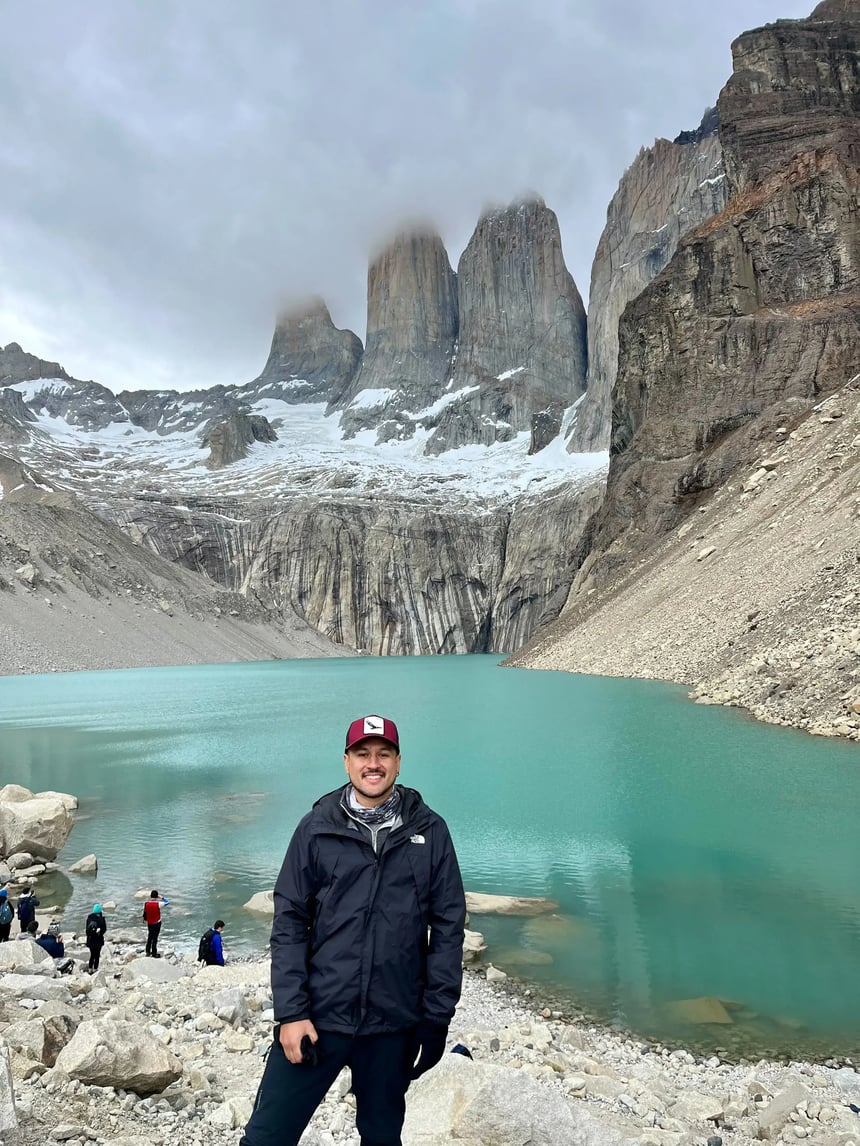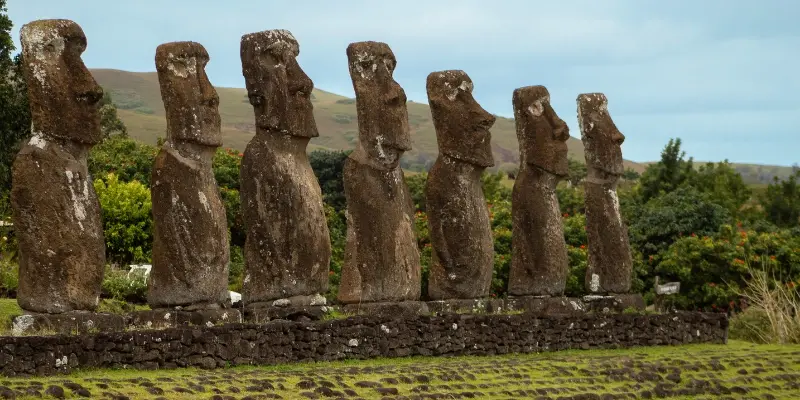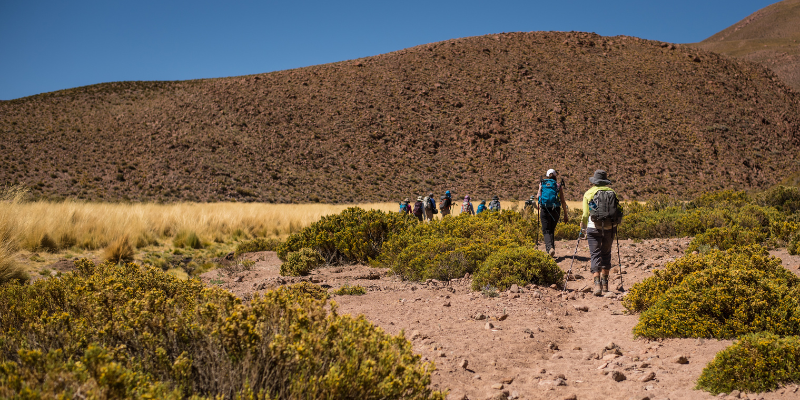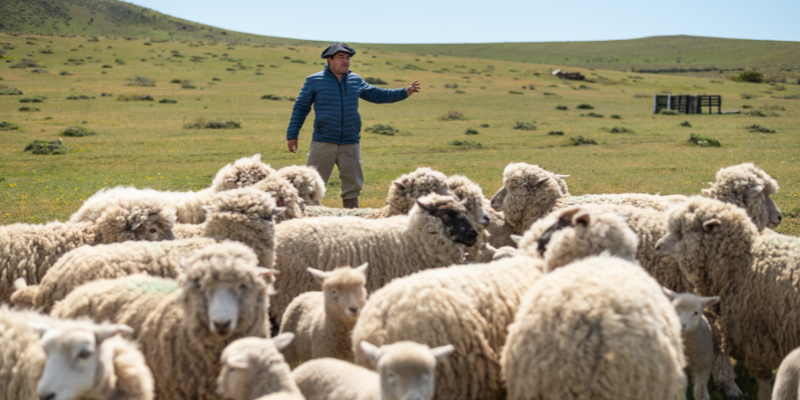Thousands of adventurers are excited to tackle the O Trek in Torres del Paine every year. Matias Espinosa, Travel Experience Designer at Cascada Expediciones, was one of them. In March 2024, he laced up his hiking boots and explored the trail. Discover his tips & tricks!

So, what exactly is the O Circuit in Torres del Paine?
The O Trek, or Torres del Paine Circuit, spans 8 to 10 days (including travel days) and showcases the highlights of Torres del Paine National Park in Chile, such as the John Gardner Pass (with 1,200 meters / 3937 feet the highest point during the trail), the French Valley, and the Towers' viewpoint. The route resembles an 'O' on the map, hence the name. Along the way, you can sleep at campsites or in "refugios" (mountain refuges).
Unlike the popular W Trek, the O Trek demands more time and endurance due to its length and potentially challenging weather and terrain. There are some difficult passages, like the John Gardner Pass in the park's north.
If you book the tour with Cascada Expediciones, you can check the map below for the updated program as of November 2024. There has been a slight change from previous years to make the trail less strenuous during the first two days and to allow you to sleep in a smaller, more remote campsite. During the trek, you will sleep in tents on campsites, but you can upgrade to a dome in EcoCamp Patagonia for nights 7 and 8 if available.

Matias, what was your experience like?
Matias: “I knew before starting the trail that it could be challenging, with tough weather and long hiking distances. But once we started, those concerns faded, and I solely focused on the trail and the landscapes. The highlight of each day? The moment I could start seeing, even from a long distance, the campsite for the night because my body needed to rest.
But one month after the experience, my perspective changed, and I realized the best moments were the hikes themselves: with snow, mud, rain, and strong winds, enjoying my protein bar with nature all around, and feeling the exhaustion of a long day on my knees.
After all, you hike not to arrive at your next destination but to enjoy the one you are in. This experience fulfilled a dream I didn't even know I had.”
"It's a mind-and-body challenge, but once you complete the trek, you realize it was entirely worth it."
What aspects of the hike and the park surprised you?
Matias: "I had seen images and videos of Grey Glacier from above, John Gardner pass, and the hanging bridges. But nothing compares to visiting these landscapes and seeing those amazing sceneries. No picture, video, painting, film, story, or photographer can capture what your eyes see. Spending a week hiking in these surroundings is a life-changing experience!"

How was the weather throughout your journey?
Matias: "Fortunately, we were blessed with a week of good weather. We could enjoy sunny days and didn't experience that much rain or wind. You are not in control of the weather, even if you want to be, so I guess part of the experience is feeling the water drops in your head, the cold of snowy days, how the wind pushes you off the path, and the sunrise warming up your cold body right after breakfast.”
On a scale from one (easy) to five (difficult), how challenging did you find it?
Matias: "I would rate it a five because it's a week of hiking, with long days and irregular terrain. It's a mind-and-body challenge, but once you complete the trek, you realize it was entirely worth it."
.webp?width=860&height=573&name=IMG_5410%20(1).webp)
What was the highlight during these nine days?
Matias: “Being nine days out in nature, disconnected from the real world, was wonderful. No cell phone signal, no work emails, no rush hour. Just our group, snow, the glaciers, and the wind. It's a feeling of being fully present and alive.
When you are used to going hiking for one day, and you are back home in the evening, there is not really a disconnection. You check your emails and social media as a habit. But out there, you have a full detox experience from technology and society. Having this experience once in a while helps you on different levels.”
And what moment would you rather forget?
Matias: “I don’t want to forget any moment of my trip. Of course, there are challenging moments when your body collapses and you think that it’s not possible to continue hiking due to knee and ankle pains, mainly if you are not used to those types of adventures. But overall, I guess this program is similar to life: you will have good and bad moments along the trail, and you will build your memories from all those experiences.”

What essential items should hikers pack when they start this adventure?
Matias: "I highly recommend waterproof gear, including hiking boots and jackets, as the weather can be very rainy if you're not lucky. Trekking poles are also a must in this program, given the constant ascents and descents. Gaiters are helpful for muddy parts.
Another important thing is dressing in different layers. While trekking, you'll get warm in some parts of the trail due to the ups and downs and cold in flat terrains, so you will constantly take clothes off or on.
You should not bring snow pants. Even though the weather can be cold, you get warm enough while hiking. So it's not necessary, as it takes up space in your backpack."
Did you overlook any crucial items yourself?
Matias: "Yes, I regretted not bringing mosquito repellent. It would have been useful near Grey Glacier, Perros Glacier, and Dickson section, especially after rainy days."
One word to describe your experience? Breathtaking
Lifesaver? Waterproof hiking boots
Best meal or snack? Every meal at EcoCamp
Most beautiful viewpoint? John Gardner pass
Something you will never forget? I will treasure every good and bad moment from this trip
How did you experience the nights and accommodations?
Matias: “You must be prepared for camping eight nights in a row. During the program, you will find different camping sites. Some of them will be more comfortable than others, and some nights will be colder than others.
Some campsites, like the Dickson or Perros campsite, are difficult to supply with food or hot water due to their remoteness. But these difficulties are compensated for by the surroundings: streams, forests, and incredible views of glaciers.
You need to have proper camping gear in case you do not rent it and a headlamp since you will organize your backpack during the morning before the sun rises and the afternoon after sunset. Overall, the camping experience is part of the connection with nature; sleeping in a tent after a very long day makes you feel like you are in a movie. But if you want, you can upgrade some nights and spend them in an EcoCamp dome, if available.”

What food and drinks are essential?
Matias: "A bottle of water is essential for your trip. One liter would be fine since you will have access to different streams to refill it during the hike. The tour guides know exactly where and when to refill and suggest places to stop for a while, drink, and eat something.
Food and snacks like protein bars, chocolates, and nuts are provided by EcoCamp. You will have plenty of snacks, so it's not necessary to carry your own in advance."
Do you have any final advice for future hikers?
Matias: “Do not underestimate the nine-day O Circuit. Hiking in Torres del Paine feels different from every other place and pushes you to your limits. You must prepare for the program by engaging in similar long treks and exercises beforehand. The trails are difficult, going up and downhill, and you will walk for 12 to 13 hours per day. Good preparation is key to a successful trek."
Thanks for sharing your insights, Matias!

Feeling inspired by Matias’ adventure? Book your O Circuit in Torres del Paine!















